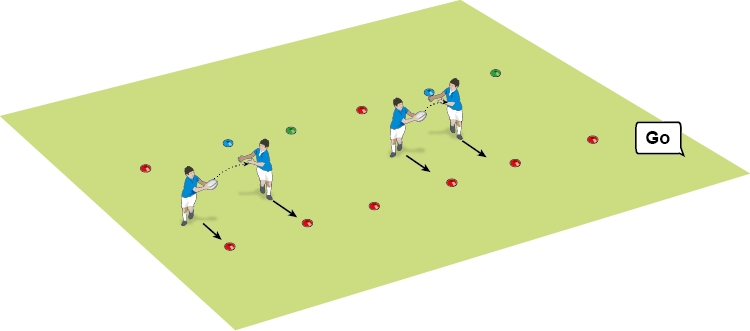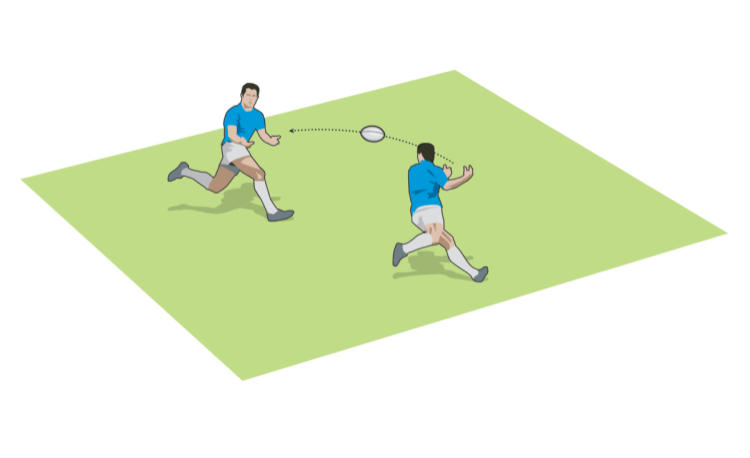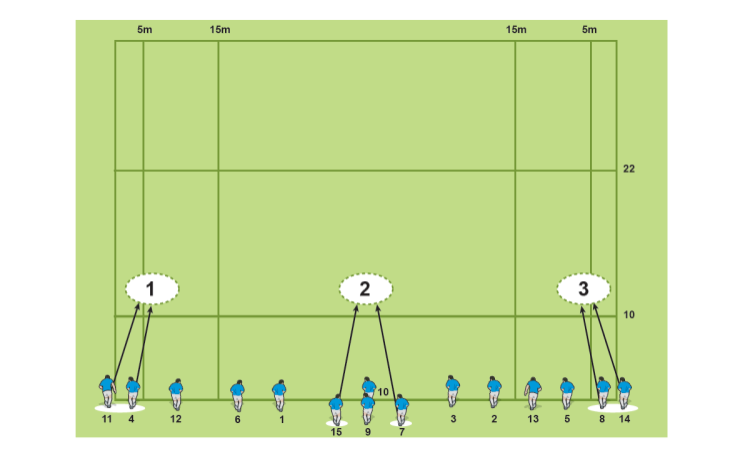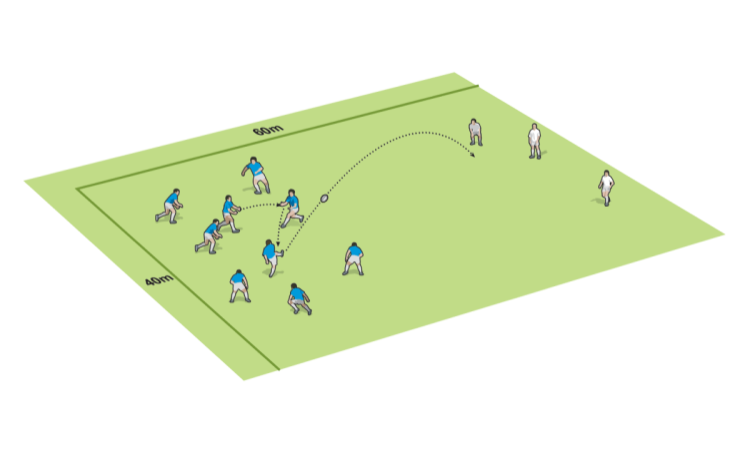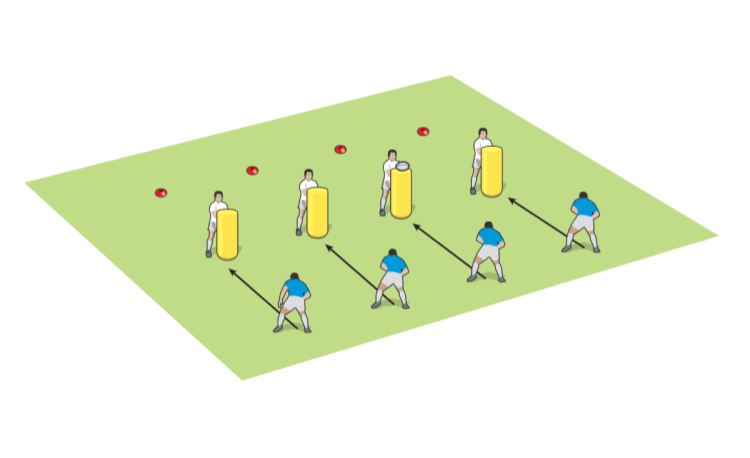You are viewing
1 of your 2 free articles
Return to play: Pythag passing
Develop your players passing on the run, changing angles and base passing (passing off the ground), while still maintain some social distancing.
It’s easy to set up and can be used as a warm-up or a skills breakout. Why Pythag? You are going along the "adjacent" side of a right-angled triangle before attacking the "hypotenuse" then returning on the "opposite".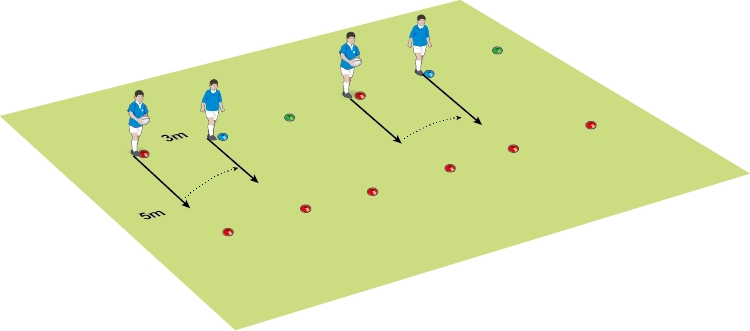
- Set up pairs of players 3m apart. The ball carrier starts on the red cone.
- When you say "go", they run forward, making a pass as they run.
- With younger, less experienced players, you can score them an extra point for running onto the pass, or passing on the run.
- For more experienced players, score them an extra point for keeping the ball off-the-chest on the catch.
- The players then set themselves to return. This time the passing player is using a base pass, that is a pass from the ground.
- As the receiver moves forward towards the red cone, shout a colour. If it is red, they move towards the red cone, otherwise, they change direction towards the colour.
- Score the same points as above. The run forward should be slow before accelerating when the colour is called.
- They then reset themselves on the original starting cones to go again.
- After two goes, swap starting roles. After another two goes, repeat the sequence but starting from the green cone.
DEVELOPMENTS
Add a defender, who always starts on the red cone and walks forward.
The passer follows their pass and gets into a space to receive another pass.
Adjust the length and width of the areas to suit the skills of your players.
TECHNIQUE
- Hands up and fingers spread to take the pass.
- Pass for the player, not to the player.
Newsletter Sign Up
Coaches Testimonials

Gerald Kearney, Downtown Las Vegas Soccer Club

Paul Butler, Florida, USA

Rick Shields, Springboro, USA

Tony Green, Pierrefonds Titans, Quebec, Canada
Subscribe Today
Be a more effective, more successful rugby coach
In a recent survey 89% of subscribers said Rugby Coach Weekly makes them more confident, 91% said Rugby Coach Weekly makes them a more effective coach and 93% said Rugby Coach Weekly makes them more inspired.
Get Weekly Inspiration
All the latest techniques and approaches
Rugby Coach Weekly offers proven and easy to use rugby drills, coaching sessions, practice plans, small-sided games, warm-ups, training tips and advice.
We've been at the cutting edge of rugby coaching since we launched in 2005, creating resources for the grassroots youth coach, following best practice from around the world and insights from the professional game.
